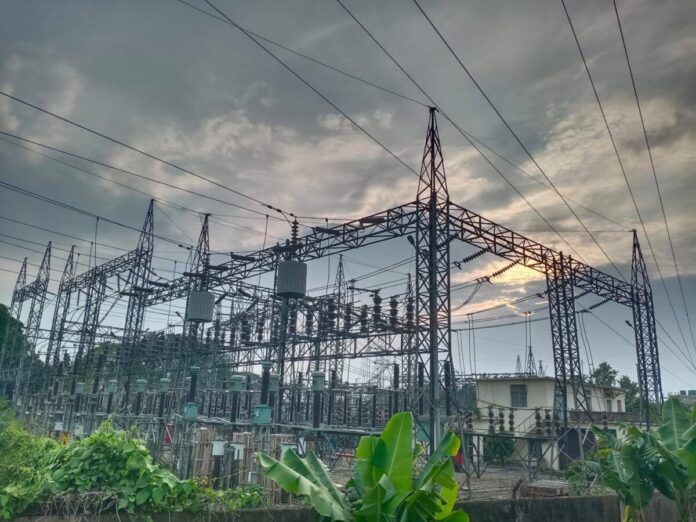In Nagaland, residents are experiencing significant power outages as the state government has initiated a series of maintenance works on its electricity infrastructure. These outages, which began last week, have raised concerns among citizens and businesses alike, highlighting the ongoing challenges related to power supply in the region. As the state grapples with these disruptions, officials assure the public that the maintenance is essential for improving the overall reliability and efficiency of the power grid.
The Cause of the Outages: Maintenance Works
The Nagaland State Power Corporation Limited (NSPCL) announced that the outages are a necessary part of their scheduled maintenance activities aimed at upgrading and repairing aging electrical infrastructure. According to NSPCL officials, the maintenance work includes routine inspections, equipment replacements, and repairs to both transmission and distribution lines. This effort is part of a broader initiative to enhance the state’s electricity supply, which has been plagued by inconsistencies and shortages in recent years.
While the government has stated that the maintenance work is vital for the long-term sustainability of the power grid, the timing has raised eyebrows. With several regions experiencing severe outages, residents are left without electricity for extended periods, leading to significant inconveniences in daily life. The outages have affected everything from basic household activities to essential services like healthcare and education.
Impact on Daily Life and Local Businesses
The ongoing power outages have created a ripple effect on daily life in Nagaland. Families are finding it challenging to manage household chores, particularly with the lack of access to cooking facilities and lighting. Many households depend on electric cooking appliances, and without power, traditional cooking methods become necessary, which are not always feasible in urban settings.
Businesses, especially small and medium enterprises, are also feeling the brunt of the outages. Many establishments rely on consistent electricity for operations, and the ongoing disruptions have led to reduced productivity. Shops and service providers that require electricity for their daily functions, such as salons and convenience stores, are facing financial losses due to the interruptions. The hospitality sector, particularly hotels and restaurants, is also impacted, leading to concerns about customer satisfaction and revenue loss.
Local markets have reported a decline in sales, as many consumers are unwilling to venture out without the assurance of consistent power supply. The situation is particularly concerning for fresh produce vendors, whose perishable goods are at risk of spoiling without refrigeration.
Public Reaction and Government Response
As power outages continue, public frustration has been growing. Residents have taken to social media platforms to express their dissatisfaction with the situation, calling for better communication from the government regarding the maintenance schedule and the expected duration of outages. Many feel that the lack of timely information has exacerbated the inconvenience.
In response to the outcry, government officials have assured residents that efforts are being made to minimize disruptions. They have emphasized the need for cooperation from the public during this period of maintenance. NSPCL has pledged to complete the necessary work as swiftly as possible and restore normalcy in power supply. Moreover, officials have promised to keep the public updated on progress and any changes to the maintenance schedule.
Future Plans for Power Infrastructure
While the current maintenance work is causing disruptions, it is part of a larger vision for improving Nagaland’s power infrastructure. The state government has been exploring various initiatives to enhance power generation and distribution, including investments in renewable energy sources such as solar and hydroelectric power. These initiatives aim to diversify the energy mix and reduce reliance on conventional power sources, which have often been unstable.
The government is also considering the development of a more robust grid system that can withstand fluctuations and ensure a steady supply of electricity to all regions, including remote and rural areas. Public-private partnerships are being encouraged to attract investment into the power sector and bring about innovative solutions to address the chronic issues of power outages.
A Call for Community Resilience
As Nagaland faces these temporary setbacks, community resilience is essential. Local organizations and community leaders can play a crucial role in supporting affected individuals and businesses. Initiatives such as community discussions, workshops on energy conservation, and resource-sharing can help mitigate the impact of outages during this maintenance period.
In the meantime, residents are encouraged to adapt to the current circumstances by planning their daily activities around the anticipated power supply schedule. Utilizing alternative energy sources, such as generators or solar-powered appliances, can also be beneficial during this period of uncertainty.
The ongoing power outages in Nagaland serve as a reminder of the challenges associated with maintaining and upgrading essential infrastructure. While the maintenance work is necessary for long-term improvements, the immediate impacts on daily life and local businesses cannot be overlooked. As residents navigate these disruptions, continued communication between the government and the public is crucial for fostering understanding and cooperation. Through collective resilience and commitment to enhancing power infrastructure, Nagaland can look forward to a more stable and reliable electricity supply in the future.




